Master Hot Tub Chemistry: A Beginner's Guide to Perfect Water Balance
April 25th, 2024
April 25th, 2024
Stepping into a hot tub after a long day can feel like a personal oasis, where stress dissolves and relaxation takes over. However, maintaining this pocket of paradise involves more than just filling it with water. The secret lies in the careful balance of chemicals that keep your hot tub sparkling clean, safe, and inviting.
Many first-time hot tub owners, myself included, find the world of hot tub chemicals intimidating. There's chlorine, bromine, pH balancers, algaecides, and a host of other substances with scientific names that sound more at home in a laboratory than in your backyard. With so many options and combinations, where does one even start? And more importantly, how does one ensure that each soak is as delightful as the last?
Understanding the role of each chemical is crucial. For example, sanitizers like chlorine or bromine serve as the guardians against bacteria and viruses. Meanwhile, pH balancers ensure the water remains gentle on your skin and equipment. Without the right mix, you might end up with cloudy water or, worse, an unsafe bathing environment.
Sharing the knowledge gained through trial and error, this guide will unravel the mysteries of hot tub chemicals, helping you achieve that perfect balance. Whether you're dealing with murky water or simply wish to avoid common pitfalls, these insights will set you on the path to hot tub nirvana.
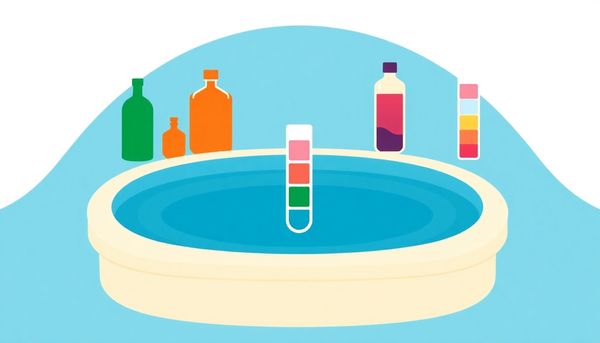
Selecting the ideal sanitizer for your hot tub involves balancing effectiveness, convenience, and personal preference. Think of it as choosing a guardian for your water, each with its unique strengths and quirks. Chlorine often stands out as the go-to choice for many hot tub aficionados. Its aggressive nature swiftly tackles unwelcome bacteria and algae, making it a reliable ally for outdoor setups. However, bear in mind the trade-off: a lingering chlorine scent reminiscent of public pools. This smell, produced by chloramines, indicates that your chlorine is working hard and may need replenishing. Remember, maintaining a chlorine level between 1 to 3 ppm ensures optimal water health.
In contrast, bromine offers a gentler touch, particularly suited for indoor or covered hot tubs. Its slower action and higher cost might be drawbacks, yet its longevity and lack of odor make it appealing. Those with sensitive skin often favor bromine, appreciating its mildness and the ease of pH balance it provides. Aiming for bromine levels between 3 to 5 ppm will keep your water safe and clear.
For those seeking a middle path, consider incorporating a mineral system or Ozonator to reduce sanitizer reliance. This approach not only complements your chosen sanitizer but also enhances water clarity and freshness. Whichever path you choose, staying informed and attentive to your water's needs ensures a spa experience that's both luxurious and hygienic.
Navigating the world of hot tub sanitizers might seem daunting, but choosing between chlorine and bromine doesn't have to be an overwhelming task. Each option comes with its distinct advantages, catering to different preferences and needs. Let's break it down so you can make an informed decision for a sparkling, inviting spa experience.
Chlorine is often the go-to for many outdoor hot tub enthusiasts. Its popularity stems from its cost-effectiveness and potent ability to eliminate bacteria and algae. Imagine being able to enjoy a pristine hot tub without breaking the bank. However, be prepared for that unmistakable chlorine odor—a byproduct of chloramines. These chloramines form as chlorine oxidizes contaminants, signaling that it's time to add more. For outdoor setups, stabilized granular chlorine is a wise choice. It dissolves rapidly and works well under the sun’s UV rays, keeping your water clear and clean.
On the other hand, bromine is a fantastic alternative if you’re bothered by chlorine’s scent. Its appeal lies in a gentler aroma and a more skin-friendly profile, making your soak more pleasant. Though bromine can be pricier and slower-acting, it maintains its effectiveness longer. This makes it ideal for indoor or covered hot tubs, where UV exposure is less of a concern.
Ultimately, the right sanitizer for your hot tub hinges on your priorities—whether it’s battling harsh sun or avoiding strong odors. Balancing these factors will guide you to the perfect choice for your oasis, ensuring each soak is rejuvenating and safe.
Navigating the chemistry of hot tubs often boils down to choosing between two popular sanitizers: chlorine and bromine. These two chemicals each boast unique properties that cater to different needs and preferences.
Chlorine, a stalwart in the world of sanitization, is favored by many for its cost-effectiveness and aggressive nature in tackling bacteria and algae. Its fast-acting, granular form is particularly beneficial for outdoor hot tubs exposed to sunlight, as it contains stabilizers like CYA to prevent rapid degradation from UV rays. Yet, the familiar, pungent odor of chlorine can be off-putting for some, a result of chloramines that form as chlorine oxidizes contaminants. Personal experience has taught that while the chlorine smell might mean it’s doing its job, it’s also a sign that more might be needed to maintain the ideal 1-3 ppm range.
On the other hand, bromine offers a gentler touch. Although typically more expensive, bromine is beloved for its lack of a strong odor and lingering presence, making it a favorite for indoor hot tubs or those not exposed to direct sunlight. Its slower acting nature, however, means that keeping the levels within the 3-5 ppm range requires patience. From my perspective, bromine's softer impact on skin makes it worth the extra cost, especially when looking for a more relaxing soak without the harshness of chlorine.
Ultimately, the choice between chlorine and bromine hinges on personal preference and the specific conditions of your hot tub environment. Both have their merits and can effectively keep your spa water clean and inviting.
While the basics of hot tub maintenance keep your water clean and balanced, exploring add-ons can elevate your spa experience to a pristine level. Consider them as the secret spices in a recipe — not essential, but transformative.
A mineral sanitizer is one such versatile addition. It can reduce your reliance on chlorine or bromine, making for softer, gentler water. Imagine soaking in your hot tub with the reassurance of fewer chemicals touching your skin. These systems use minerals like silver and copper to inhibit bacterial growth, which means less hassle and a more organic feel to your hot tub experience.
An Ozonator is another savvy choice, especially for those managing a busy spa. By injecting ozone into the water, this device breaks down contaminants at a molecular level. You might recall a friend mentioning their water always feels fresh despite frequent use; they likely have an Ozonator at work, quietly ensuring the ultimate cleanliness.
Do you live in an area notorious for hard water? Scale-prevention chemicals could become your new best friend. They help guard against calcium buildup that can damage your hot tub's intricate systems. With scales kept at bay, the longevity of your equipment gets a significant boost.
Incorporating these add-ons is akin to having a safety net for your regular maintenance routine. They offer peace of mind, ensuring that even if life gets hectic, your hot tub remains a sanctuary of cleanliness and relaxation.
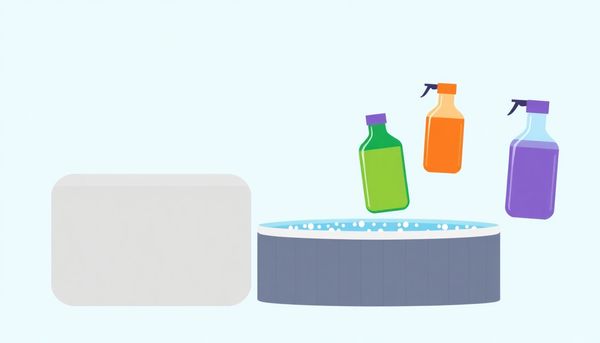
Testing your hot tub water before introducing any chemicals is like checking the weather before planning a picnic; it's essential for a successful outcome. A friend once shared a tale of his first hot tub, brimming with excitement, he dumped in chemicals without testing the water. The result? A frothy mess that resembled a bubble bath gone wrong. To avoid such mishaps, always start with a proper water test.
Test strips are a handy tool for a quick check, giving you an overview of the pH, alkalinity, and sanitizer levels. For those who prefer precision, a liquid test kit provides a detailed analysis. This step is crucial because it sets the stage for everything else. If you're dealing with especially tricky water or suspect metal content, a trip to your local pool store for a comprehensive test might be wise. They can pinpoint metals like iron or copper, which could lead to unsightly stains or damage if not addressed.
Once you’ve gathered your baseline readings, you can confidently add the necessary chemicals. This process not only ensures that your water remains crystal clear but also enhances the longevity of your hot tub. Remember, it's about creating a safe, enjoyable environment for relaxation, not just throwing in chemicals and hoping for the best. So, think of testing as your first defensive play in the game of hot tub care.
Before introducing any chemicals to your hot tub, understanding what you’re starting with is crucial. Think of it like baking a cake without a recipe; you need to know your ingredients. Testing your hot tub water is that first step that ensures all subsequent actions are both effective and safe. Without this essential check, you might end up mixing ingredients that don't belong together, resulting in murky water or ineffective sanitization.
To get started, a reliable supply of test strips or a liquid test kit should be part of your toolkit. Test strips offer convenience, giving a quick snapshot of your water's health, while liquid kits provide more precision, ideal for those who desire a deeper dive into their water quality. If metals or minerals are a concern, taking a sample to a local pool and spa store can offer insights into unseen elements. I remember my first hot tub fiasco; I skipped this step and ended up with water so cloudy, it looked like a science experiment gone wrong.
Once you’ve established a baseline, adding chemicals becomes a science rather than a guessing game. With accurate readings, you know exactly what your water needs, whether it's adjusting pH levels, increasing alkalinity, or adding sanitizers like chlorine or bromine. By understanding your water first, each chemical added is a step towards a crystal-clear, inviting hot tub experience.
Selecting the perfect sanitizer for your hot tub feels akin to choosing the right companion for a long journey. They each offer unique benefits, and their compatibility with your lifestyle and hot tub environment can make the difference between a clean, enjoyable soak and a maintenance nightmare. Chlorine, a popular choice among outdoor hot tub enthusiasts, acts swiftly, efficiently eliminating bacteria and algae. Its affordability and ease of use make it a go-to for many. However, the infamous chlorine odor can be off-putting, and the presence of chloramines, which produce the smell, indicates it's time to replenish your supply. Aiming for chlorine levels between 1 to 3 ppm ensures optimal performance.
For those seeking a gentler approach, bromine steps in as a reliable contender. Known for its mild scent and longer-lasting effects, bromine becomes an excellent option for indoor or shaded hot tubs. However, it comes with a higher price tag and slower reaction time. Maintaining bromine levels around 3 to 5 ppm keeps your water spotless without the sharp smell of chlorine. And while bromine is kinder to the skin, it does require a more sheltered environment, as sunlight can diminish its effectiveness.
To maximize efficiency and minimize chemical use, consider supplementary systems like mineral dispensers or Ozonators. These aids can significantly enhance your tub's sanitation, allowing you to enjoy your soak with peace of mind. Deciding between chlorine and bromine boils down to personal preference and specific hot tub conditions. Choose wisely, and your hot tub will reward you with crystal-clear, inviting waters.
Before diving into the colorful world of hot tub sanitizers and shocks, attention must first be paid to pH and alkalinity. Think of these two as the dynamic duo in your quest for pristine water: pH measures the acidity, while alkalinity acts as the stabilizing force. If your hot tub's pH resembles a roller coaster, careening from highs to lows, it could spell chaos for your spa experience. High pH levels might result in dry skin or eye irritation, whereas low pH can corrode your tub's components.
My own experience with pH and alkalinity went awry when I first set up my hot tub. I ignored these preliminary adjustments, hastily adding chlorine, only to end up with cloudy water and an itchy aftermath. Lesson learned: always handle these fundamentals first.
To begin, test your water using reliable strips or a liquid kit. Once you have your baseline, focus on adjusting alkalinity before pH. Alkalinity provides a buffer for pH, preventing sudden fluctuations. If you’re slightly off, start small; a few tablespoons of the correct increaser or decreaser can work wonders. Allow each adjustment to circulate for about 20 minutes, then test again.
Addressing pH and alkalinity might not be the most glamorous part of hot tub maintenance, but it sets the stage for the more exciting chemical additions. With these levels balanced, your sanitizers can perform at their best, leaving you with clear, inviting water.
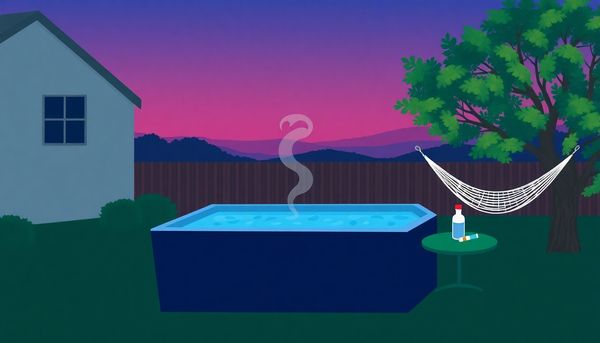
Balancing the water chemistry in your hot tub is akin to mastering a delicate dance—each step requires attentiveness and precision. One misstep, and you might find yourself with cloudy water or a tub that feels more like a petri dish than a relaxing oasis. A close friend once confided how her hot tub turned into a foamy mess because she overlooked a small detail in her water maintenance routine. That experience taught her the importance of maintaining the right balance, and it can certainly guide you too.
Start with alkalinity; consider it the backbone of your water's chemistry. It stabilizes pH levels, shielding against erratic changes that could ruin your hot tub experience. Aim for a range between 100 and 150 ppm. Once alkalinity is set, attend to the pH levels, ensuring they hover between 7.4 and 7.6. A pH imbalance can transform a soothing soak into a scratchy ordeal, with itchy skin and stinging eyes.
Calcium hardness is another crucial element. Striking a balance here prevents corrosive water from damaging your tub’s components or leaving unsightly deposits. Keep levels between 175 and 250 ppm. My neighbor once neglected this, leading to expensive repairs on her spa’s heating elements—an oversight you definitely want to avoid.
Finally, introduce your preferred sanitizer, either chlorine or bromine, to keep unwanted guests like bacteria and algae at bay. These steps, though they require a bit of patience, ensure every hot tub session is a blissful escape, free from chemical chaos and maintenance woes.
#
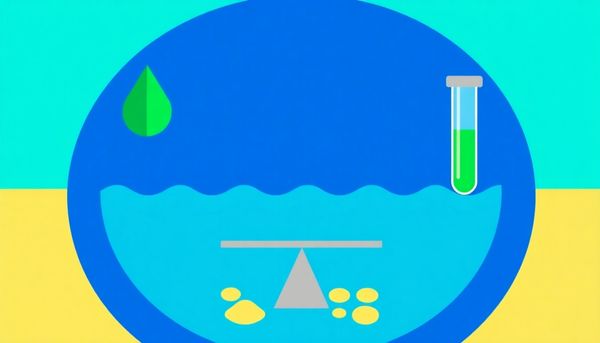
Selecting the right sanitizer for your hot tub is akin to choosing the perfect ingredient for a recipe—crucial and transformative. Imagine hosting a gathering, with friends eager to relax in your spa, only to find that the water's less inviting than expected due to poor sanitizer choice. Chlorine and bromine are the stalwarts of hot tub sanitizing, each with distinct characteristics that cater to different preferences and setups.
Chlorine is the go-to for many due to its aggressive nature against bacteria and algae, ensuring a pristine environment at an affordable cost. However, the unmistakable chlorine odor can disrupt the serene spa atmosphere. This odor usually signals the need for more chlorine, as it indicates the presence of chloramines—byproducts from chlorine's battle against contaminants. For outdoor hot tubs basking in sunlight, chlorine remains a steadfast choice, thanks to its stability under UV exposure.
Bromine, on the other hand, offers a subtler approach, leaving the air free from the sharp scent of chlorine. Its stability at high temperatures makes it a favorite for indoor tubs or those shielded from direct sunlight. Although bromine's initial cost might be higher, its longevity and skin-friendly nature often sway users. Yet, its slower dissolving rate requires patience, a small trade-off for its gentle touch.
Beyond these two, other systems like mineral dispensers or saltwater setups can complement your sanitizer, reducing the load and offering a holistic cleaning approach. Whether you seek chlorine's robust efficiency or bromine's gentle persistence, understanding your hot tub's environment will guide you to the ideal sanitizer choice, ensuring every soak is a soothing success.
Balancing the water in your hot tub involves more than simply tossing in some chemicals. It's a precise art, akin to baking a soufflé where every ingredient and step matters. Before you begin, it's essential to understand the baseline of your water. Whether you're using test strips or a liquid test kit, checking your water’s pH, alkalinity, and sanitizer levels forms the foundation for achieving that perfect soak. Imagine you’ve just unboxed a test kit, dipping those strips to reveal colors that tell your water's story. Are the pH levels slightly high? They might need a nudge downwards to avoid potential skin irritation.
A friend once shared their tale of neglecting to test first, ultimately leading to a cloudy, uninviting spa. It's a cautionary tale worth heeding. Testing not only reveals the immediate needs of your water but also helps in planning the sequence of adding necessary chemicals. For instance, if metals are present, a sequestrant should be your first addition to prevent staining and damage.
After initial testing, make incremental adjustments rather than drastic changes. If the alkalinity is off, tackle that first, as it stabilizes the pH. A low pH can lead to corrosion, while a high one may cause discomfort. By adjusting and retesting, you maintain a harmonious balance, ensuring your hot tub remains a place of relaxation rather than frustration. This iterative process of testing and tweaking ensures longevity for both your hot tub and your enjoyment of it.
Maintaining crystal-clear water in your hot tub is both an art and a science, and regular shock treatments are a vital component of this delicate balance. Shock treatments might sound intimidating, but they are essentially a deep cleanse for your hot tub. They serve as a powerful ally in rejuvenating your water, keeping it in top condition by breaking down organic contaminants, and revitalizing your sanitizer’s effectiveness.
Let's unfold the magic of shock treatments. Imagine inviting friends over for a relaxing soak, only to find the water cloudy and uninviting. A timely shock treatment could have saved the day. By adding shock to your spa weekly, or after heavy use, you effectively eliminate the build-up of chloramines and bromamines—the culprits behind murky water and that notorious "hot tub smell."
Non-chlorine shocks are perfect for regular maintenance, allowing you to use your tub shortly after treatment. They work by oxidizing waste and refreshing your sanitizer without the potent odor of chlorine. On the other hand, chlorine-based shocks are your go-to solution when your tub needs a more intense cleanse—ideal for tackling stubborn algae or bacterial blooms.
I once skipped my weekly shock routine and quickly learned my lesson. The water lost its clarity and my sanitizer struggled to keep up. A swift application of shock restored the water’s sparkle, proving how essential these treatments are. Implementing regular shock treatments is more than a routine; it’s your pathway to a consistently inviting and hygienic hot tub experience.
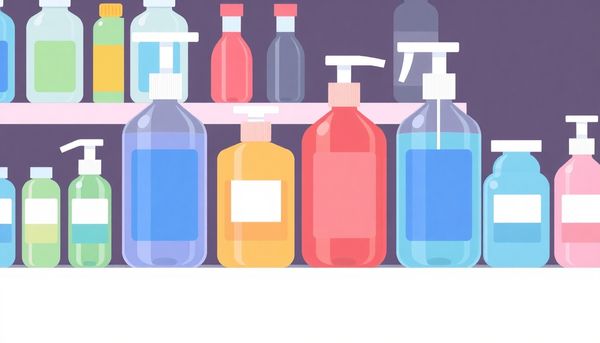
Clear hot tub water isn't just about aesthetics; it's about safety and enjoyment. A hot tub with cloudy water not only looks uninviting, but it can also harbor bacteria and other contaminants that are harmful. Avoiding this murky menace starts with understanding the delicate chemistry of your spa's water.
First things first, always test your water before you add any chemicals. Whether you prefer test strips for their convenience or a liquid test kit for more precision, knowing your starting levels is crucial. This helps you avoid the common pitfall of adding chemicals blindly, which can lead to imbalances and, ultimately, cloudy water.
Once you have your water tested, prioritize adjusting total alkalinity and pH. These two elements are the bedrock of balanced hot tub water. Alkalinity acts as a buffer, stabilizing the pH levels. If your pH is swinging wildly, it can negate the effectiveness of your sanitizer, allowing bacteria to flourish and cloud up your water.
Next, ensure you're using the right amount of sanitizer, be it chlorine or bromine. Too little, and your water won't be properly sanitized; too much, and you could end up with skin irritation or eye discomfort. Remember, patience is key—add chemicals slowly, allowing each to dissolve fully before retesting.
Finally, regular shocking with an oxidizer can rejuvenate your sanitizer and break down organic waste, preventing it from clouding your water. By following these steps methodically, you'll maintain crystal-clear water that’s inviting and safe to soak in.
When orchestrating the perfect symphony of hot tub maintenance, one must conduct with precision, ensuring each note—or chemical—is added in sequence to achieve harmony. It's like baking a cake; the order of ingredients can make the difference between fluffy delight and a dense flop. Let me walk you through this carefully choreographed process that keeps your hot tub pristine and inviting.
Kick off the process with metal sequestrant if your water source has high metal content. This prevents unsightly stains and equipment damage. Once that's settled, turn your attention to alkalinity. Start here because it acts as a cushion for pH fluctuations; think of it as the underpainting that sets the stage for the final masterpiece. Adjust the alkalinity to the comfortable range of 100-150 ppm.
With alkalinity under control, shift focus to pH levels. Aim for a sweet spot between 7.4 and 7.6, ensuring your sanitizer works effectively without causing discomfort to bathers. Next in line is your chosen sanitizer—be it chlorine or bromine. For outdoor tubs, chlorine's rapid action is ideal, while bromine serves better indoors with its gentler touch and longer lifespan.
Don’t rush; patience is key. Allow each chemical to circulate and fully dissolve before testing your water again. This gradual approach prevents chemical interactions from clouding the water. Lastly, adjust calcium hardness if needed, but only after other levels are stable. Following this sequence not only ensures clarity and cleanliness but also maximizes the efficiency of each component, making your hot tub an oasis of cleanliness and relaxation.
Selecting the ideal sanitizer for your hot tub is somewhat like choosing the perfect outfit for a special occasion—both function and comfort matter. Chlorine and bromine are the two main contenders in this arena, each bringing its own set of advantages to the spa party. Chlorine is the more economical option and excels at zapping bacteria and algae swiftly. Its presence in outdoor hot tubs is widespread due to its efficiency and because UV rays can otherwise degrade bromine. However, there's a downside: the infamous chlorine smell, which often signals it's time to replenish as spent chlorine turns into chloramines, causing that odor.
Bromine, on the other hand, is like the quiet, reliable friend who’s always there when things get heated. It works more slowly, but it holds up better in hot water and doesn’t assault your senses with a strong scent. Its gentleness on the skin makes it a favorite for many, despite a price tag that's a tad higher. Bromine suits indoor or covered hot tubs, where sunlight won’t diminish its effectiveness.
Ultimately, if you're looking to minimize chemical levels, consider enhancing your setup with mineral systems or an Ozonator. These can supplement your sanitizer, allowing for reduced chemical usage. Each choice affects not only the clarity of your water but also the comfort of your soak, so weigh them carefully to suit your preferences and hot tub conditions.
Testing and adjusting the water levels in your hot tub serves as a crucial step in maintaining a pristine aquatic environment. Think of it like tuning a musical instrument; without precision, the harmony is lost. Before reaching for those chemicals, arm yourself with reliable testing tools. Test strips offer a quick look, but a liquid test kit dives deeper, pinpointing precise measurements. For those seeking an even more detailed analysis, a visit to a local pool and spa store can reveal hidden metals and minerals in your water.
Once you've gathered your data, it's time to roll up your sleeves. Begin by setting your focus on alkalinity. This foundational step acts as a buffer for pH levels, preventing wild swings that can jeopardize your water's balance. From personal experience, a misstep here once led my hot tub to become a frothy, chemical cocktail—an oversight I won't repeat. Next in line is pH adjustment, ensuring it lands in that sweet spot between 7.4 and 7.6.
After achieving equilibrium with alkalinity and pH, your attention turns to sanitizers, be it chlorine or bromine. Each has its nuances, and patience is key, especially with bromine's slower dissolution rate. A careful, step-by-step approach, alongside methodical testing, ensures your hot tub remains a bastion of cleanliness and relaxation. Remember, small adjustments go a long way—monitor, test, and retest until every element aligns harmoniously.
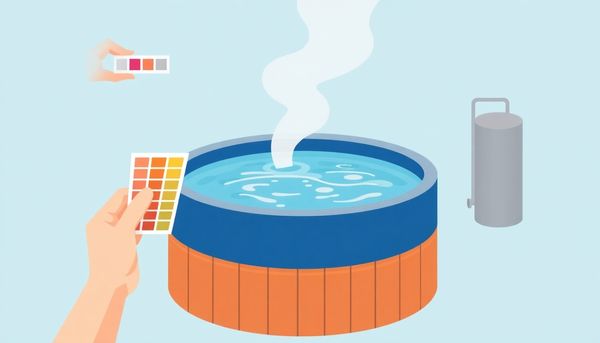
When thinking about the upkeep of a hot tub, shock treatments often stand out as a reliable ally. This essential component in hot tub maintenance is not just about clarity; it's about ensuring a hygienic aquatic experience. One weekend, I noticed my hot tub water looking murkier than usual after a busy gathering. A quick application of shock treatment worked wonders, revitalizing the sanitizer and banishing cloudiness.
Shock treatments operate by oxidizing organic contaminants, which helps to clear out those chloramines responsible for the notorious chlorine odor. These compounds neutralize quickly, refreshing your sanitizers—whether chlorine or bromine—so they can continue their germ-fighting duties effectively. Regular use of non-chlorine shocks, ideally post-soak or weekly, maintains your tub's freshness without forcing a lengthy wait time before your next soak.
On the other hand, chlorine shocks are your go-to when tackling more stubborn issues like algae or a heavily used spa. While they require a longer downtime before re-entry, their potency in sanitation cannot be overstated. They break down not just chloramines but also any lurking bacteria, restoring water to its pristine state. My personal routine? A balance of non-chlorine shock for regular upkeep with periodic chlorine treatments, especially after heavy use or during unusually warm weather. For a hot tub that’s always ready to provide a clean, relaxing dip, incorporating shock treatments into your regimen is indispensable.
Adding chemicals to your hot tub is an art of precision, akin to following a recipe where the ingredients must be added in the right order for the dish to turn out just right. The sequence isn’t just a suggestion; it’s essential to maintaining crystal-clear water and ensuring the effectiveness of every product you use. Begin your chemical journey with a thorough water test. This reveals your baseline levels, setting the stage for successful chemical balancing.
Once you've donned your metaphorical lab coat, your first task is to address metals in the water. Metals can stain surfaces and damage equipment, so neutralize them before they wreak havoc. With metals under control, turn your attention to alkalinity. It’s the backbone of water balance, ensuring pH levels remain stable. Raising or lowering alkalinity first prevents wild swings in pH, which is your next focus.
Sanitizers come after pH adjustments. Whether you choose fast-acting chlorine or the gentler bromine, give it time to disperse and work its magic. Patience here pays off, as rushing could lead to insufficient disinfection. Calcium hardness is addressed last, protecting the hot tub’s structure without interfering with the sanitizer’s efficacy.
By respecting this chemical choreography, you create an inviting spa environment that’s both pleasant and safe, leaving you to soak in worry-free relaxation.
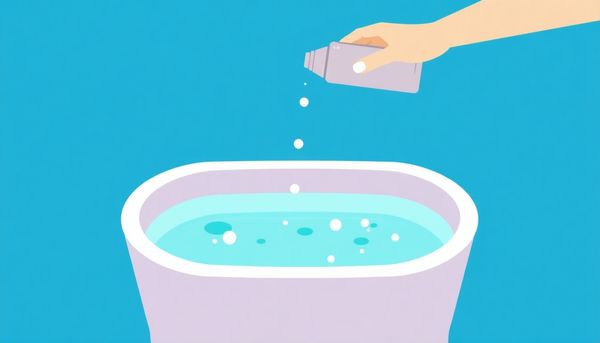
This article provided insights into maintaining your pool. Start your pool care journey today!
Want to become a pool maintenance expert? Our free Pool School course covers everything you need to know about pool care. From basic maintenance to advanced troubleshooting, you'll learn how to:
Join over 10,000 pool owners who have already transformed their pool care routine. Get started with our free Pool School course today!